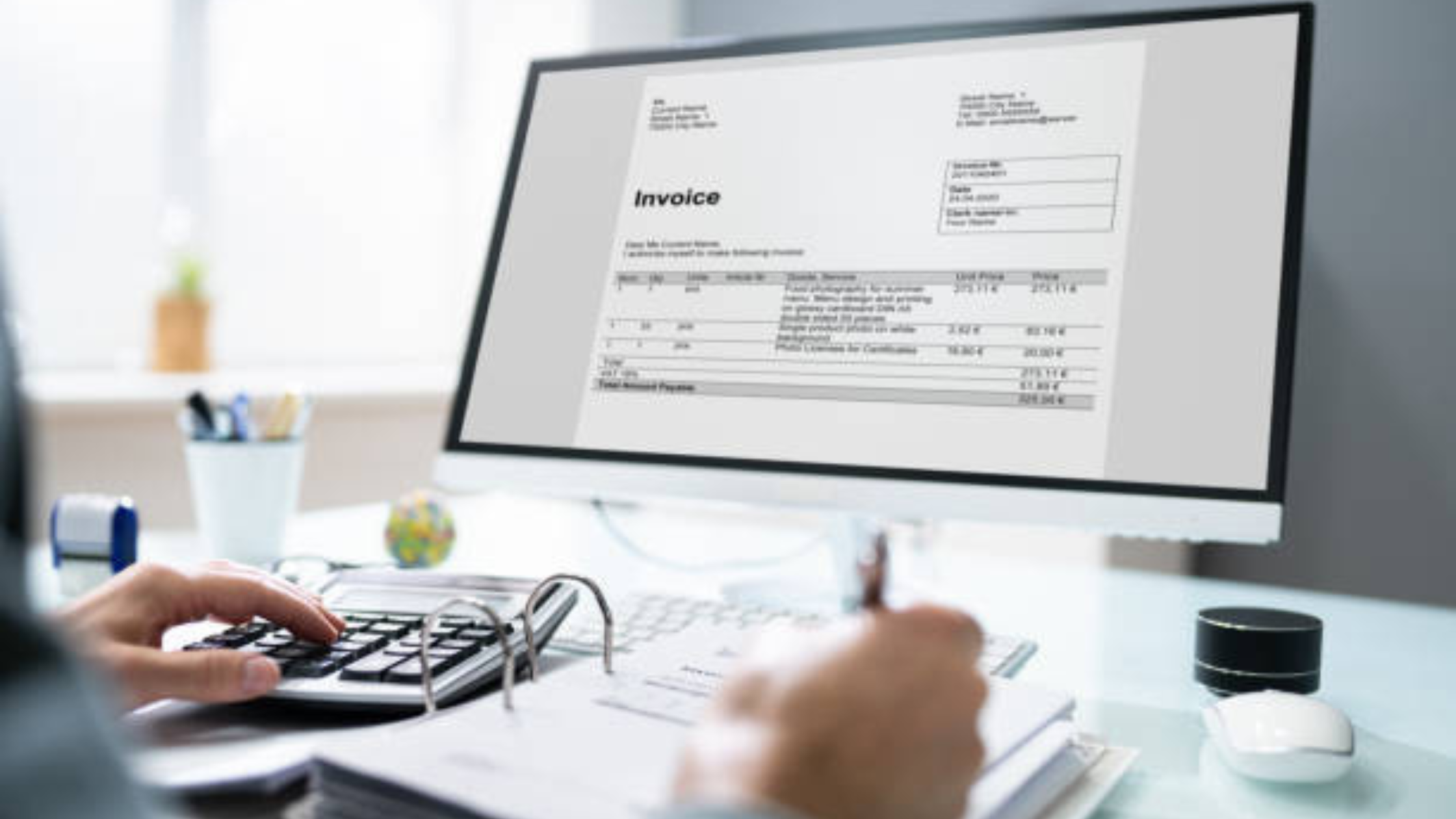Master the Art of Creating Salary Receipts

Mastering the Art of Creating Salary Receipts.
Mastering the art of creating salary receipts is a pivotal skill for individuals and businesses alike. In the realm of finance, accuracy and professionalism are paramount, and salary receipts play a crucial role in documenting employee compensation. This comprehensive guide will delve into the intricacies of crafting impeccable salary receipts that comply with legal requirements and best practices. From understanding the essential components of a salary receipt to exploring software tools that streamline the process, this guide will equip you with the knowledge and tools necessary to create professional and compliant salary receipts. Whether you are an HR professional looking to enhance your skills or a small business owner seeking to improve financial record-keeping, mastering the art of creating salary receipts will undoubtedly elevate your financial practices and bolster your credibility. Join us on this journey to unlock the secrets of creating accurate, efficient, and legally sound salary receipts.
Key Components of a Salary Receipt
Employee Information
A salary receipt serves as a crucial document for both employees and employers, detailing various aspects of the compensation package. The section dedicated to employee information typically includes:.
- Full name of the employee
- Employee ID or number
- Contact details of the employee, such as phone number and email address
- Date of birth, providing important personal information
- Department or position held within the organization for clarity on roles and responsibilities
- Emergency contact details, ensuring quick communication in unforeseen circumstances
Employer Information
Equally important is the section containing details about the employer. This part usually covers:.
- Company name, providing the official title of the employer
- Company address, specifying the physical location of the workplace
- Employer identification number (EIN), a unique identifier assigned to the business by the IRS
- Contact information for the HR department or relevant personnel for employee queries
- Company logo for branding and recognition
Salary Details
The core of the salary receipt lies in the breakdown of the compensation package. It should outline:.
- Base salary amount, the fixed regular payment before any additional earnings or deductions
- Overtime pay (if applicable), compensating for extra hours worked beyond regular working hours
- Bonuses or incentives, rewarding exceptional performance or meeting set targets
- Detailed breakdown of allowances and benefits to provide a comprehensive view of the total package
- Clear distinction between gross and net pay to understand deductions and additions
Deductions and Taxes
This section sheds light on the various deductions and taxes impacting the net pay. It typically includes:.
- Income tax deductions, mandated by federal and state tax laws
- Social security contributions, supporting the social security program
- Health insurance deductions, covering medical benefits
- Retirement plan contributions for long-term financial planning
- Other deductions like union dues, charitable contributions, or commuter benefits
Payment Information
Lastly, the payment information segment specifies the logistics of disbursing the salary. It covers:.
- Mode of payment, indicating whether the salary is paid through direct deposit, check, or other means
- Pay frequency, detailing how often the employee receives payment (monthly, bi-weekly, etc.)
- Bank account details if direct deposit is utilized, ensuring the salary reaches the correct account securely
- Information on any additional payments or reimbursements made alongside the salary
A comprehensive salary receipt integrates all these components to enhance transparency and understanding in the payment process, fostering trust and clarity between both parties. By including detailed information on employee and employer specifics, salary breakdown, deductions and taxes, and payment logistics, the salary receipt becomes a vital document ensuring fair compensation practices and fostering a healthy employer-employee relationship.
Tips for Creating Effective Salary Receipts
Creating salary receipts is a crucial aspect of managing payroll and ensuring transparency in financial transactions. Here are some essential tips to consider when crafting effective salary receipts:.
Utilize a Standard Template: Using a standardized template for salary receipts not only saves time but also ensures consistency across all receipts. This template should include sections for employee details, salary breakdown, deductions, and any additional notes.
Ensure Accuracy and Clarity: Accuracy is paramount when it comes to salary receipts. Double-check all figures and details to avoid any discrepancies. Clarity in presenting information is also vital to ensure that the recipient understands the breakdown of their salary.
Include Relevant Details: A well-crafted salary receipt should include essential details such as the employee's full name, designation, salary period covered, gross salary, deductions (taxes, insurance, etc.), and net salary amount. Providing a comprehensive overview helps in maintaining transparency.
Review for Errors: Before finalizing the salary receipt, take the time to review it thoroughly. Look for any typographical errors, incorrect figures, or missing information. A meticulous review process helps in presenting a professional and accurate receipt.
Maintain Confidentiality: Salary information is sensitive and should be treated with the utmost confidentiality. Ensure that salary receipts are securely shared only with authorized personnel to maintain employee privacy and prevent any potential data breaches.
In addition to the above tips, consider personalizing the salary receipt by adding a personalized note of appreciation or any relevant updates. Remember that the salary receipt serves as a formal document that reflects the employer's professionalism and commitment to transparent financial practices.
When creating salary receipts, it's important to comply with legal requirements and industry standards. Adhering to local labor laws and regulations ensures that the salary receipts are legally sound and provide employees with accurate financial information.
Furthermore, incorporating digital solutions for generating and distributing salary receipts can streamline the process, reduce paper usage, and enhance accessibility for employees. Online platforms or software designed for payroll management can automate the receipt generation process and facilitate easy access to past receipts.
Effective communication is key in the payroll process. Clearly communicating any salary adjustments, bonuses, or deductions on the receipt helps employees understand their compensation package and any changes that may have occurred. Transparency fosters trust and engagement among employees, promoting a positive work environment.
Lastly, regular audits of salary receipts and payroll records are essential to ensure compliance with auditing standards and identify any discrepancies or inaccuracies. Conducting periodic reviews of financial documents helps in maintaining accurate financial records and addressing any issues promptly.
By integrating these additional practices into the creation of salary receipts, businesses can enhance their payroll management processes, promote financial transparency, and strengthen employee trust and satisfaction.
Common Mistakes to Avoid
In any professional field, certain errors can have significant consequences. When it comes to financial matters, avoiding mistakes is crucial to ensure accuracy and compliance. In this section, we will explore some common mistakes that individuals and businesses should steer clear of to maintain financial health.
Incomplete Information: The importance of providing complete information cannot be overstated. Incomplete data can lead to errors in financial reports, budgeting, and decision-making. To prevent this, always double-check that all required information is provided.
Incorrect Calculations: Math errors are among the most common mistakes in financial matters. Whether it's a miscalculation in a budget spreadsheet or an error in tax calculations, incorrect math can lead to financial discrepancies. Using automated tools or seeking assistance from a professional can help mitigate this risk.
Missing Signatures: Signatures serve as a form of authorization and validation in financial transactions. Forgetting to sign important documents can result in delays, disputes, or even legal issues. Make it a habit to review documents and ensure that all necessary signatures are in place.
Lack of Transparency: Transparency is essential for building trust in financial relationships. Hiding information or being vague about financial matters can raise suspicions and damage professional credibility. Always strive to maintain open communication and provide clear, honest information to all stakeholders.
By being mindful of these common mistakes and taking proactive measures to avoid them, individuals and businesses can enhance their financial practices and safeguard against potential pitfalls.
Expanding on the importance of avoiding these mistakes, it's crucial to understand that incomplete information not only hampers decision-making but also poses risks of regulatory non-compliance. Accurate and comprehensive data are the backbone of sound financial analysis and planning.
Moreover, incorrect calculations can have far-reaching consequences, impacting budget allocations, forecasting accuracy, and overall financial health. Embracing technology solutions like financial software can streamline calculations and reduce the likelihood of human errors.
Additionally, missing signatures may seem like a minor oversight, but they can lead to significant delays in processing transactions or approvals. Implementing stringent document review processes and approval workflows can help mitigate such risks and ensure smooth operations.
Lastly, transparency fosters a culture of accountability and trust within an organization. By promoting open communication channels and sharing key financial information with stakeholders, businesses can build stronger relationships and enhance their reputation in the industry.
By addressing these common mistakes head-on and implementing best practices, individuals and organizations can fortify their financial foundations and pave the way for sustainable growth and success.
Conclusion
Mastering the art of creating salary receipts is essential for both employers and employees to maintain accurate records and ensure transparency in financial transactions. By understanding the components of a salary receipt and learning how to create them effectively, individuals can streamline their payroll processes, adhere to legal requirements, and prevent disputes or discrepancies. Embracing this skill not only fosters professionalism and accountability but also contributes to building trust and credibility within an organization. Ultimately, investing time and effort into perfecting the craft of generating salary receipts is a valuable asset that yields benefits in terms of efficiency, compliance, and financial management.







